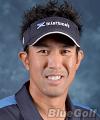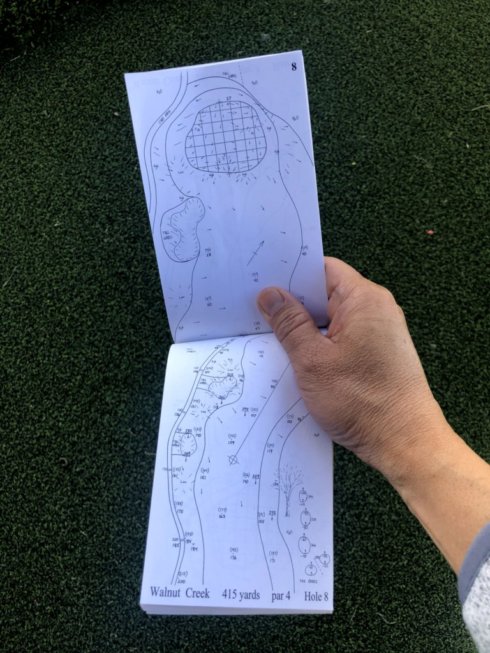The strategy a golfer uses to get around the course can affect their score and mental game. How well you manage to play a certain hole or a golf course can result in a great day at the course or can result in you doubting your actions afterwards. Sometimes if you play your cards right, you can score better than you even deserve!
Many different factors come into play when you are preparing to play a golf course, so let’s get into what those are and how to approach your preparation.
Is This a Course You are Familiar With?
If it’s your first time playing a particular course, you’ll want to ensure you prepare before you even arrive for your tee time. This can mean getting to the course earlier enough to prepare either getting a scorecard to see the length of the course or design of it. You want to prepare so you can have a game plan to use your strengths properly.
You can decide if it has narrow or wide fairways, many trees, out-of-bounds, water hazards (penalty areas) or bunkers? Have a game plan to use certain clubs on certain holes and practice them on the driving range beforehand. Maybe hit a few shots out of the practice bunker to see how the sand texture is. And plan to be aggressive with shots you’re comfortable with but being too aggressive with certain shots (especially around penalty areas like bodies of water) can ruin your score.
Same with putting or chipping. All you need a few minutes for each so hit 15-20 less balls on range and use that time to get familiar with the course conditions rather than focusing on your swing.
Take It Hole-By-Hole
After completing your pre-round routine, it’s time to use that information and practice skills related to the layout of the course and your strategy going in. Here are course factors to consider as you prepare your attack strategy – and note that these can change daily depending on things like weather factors and hole locations.
Tee Marker Location on the Tee Box
The markers are usually moved up and back daily to lesson wear and tear on the different areas of the tee box. Sometimes they are moved even to another tee box so we have to take that in consideration in deciding what club to hit. I usually find out distances to fairway bunkers, trees or any penalty areas.
Wind Direction for Each Hole
If there is wind that day, it will always affect your ball so get your fingers dirty and pick up some grass and let it fly. Where the grass blows is where the wind is going. You can also take a look at the flag and see which way it is blowing. Sometimes trees and other taller things can prevent you from finding out which way the wind is blowing since there is more wind higher than our height. You can hit the perfect shot but it’s only perfect where it lands, not how you hit it.
Hole Location on the Greens
This factor can be used if you really want to attack the pin for your approach shot. If you can see the pin location from the tee box, you are planning ahead to see what side or angle you want your ball to come into the green from.
So if the pin location is tucked on the right side of the green, it is likely a better angle to come in from the left side so you have more green to work with. In this instance, you’ll want to favor the left side of the fairway for your tee shot or approach shot to the green.
Focus When It Matters
It’s all about breakdown in golf, not like Bryson DeChambeau breakdown but it can be a lot easier when It can help to break down your thoughts into chunks between each shot. It can be invaluable to clear your mind and focus on the right thing at the right time. And always stay positive and in the moment. If you just came off of a bad hole, put it past you and remember that your total score for the round includes 18 holes and not just one.
You’ll often see many players focusing when lining up behind the golf ball and target either closing their eyes or staring at the target. It is common to focus on many things during the round but let’s see if we can focus properly so we get more of the results that you envisioned.
Focus On Your Shot Flight and Direction
Try imagining how your ball flight will look to get the ball into the fairway or green. That is your one thought when you start addressing the ball.
It is very common to think about how to avoid fairway bunkers, trees, water or any place you don’t want your golf ball to go. This is what you call an adverse thought – and is something you want to try to avoid. You are thinking of not wanting to go “right” so your swing thought is to try and go “left”. Your swing is now modified and will be altered which will produce a swing that you regularly don’t use.
Focus on the positive and on the shot you want to make.
Focus On Your Setup Over the Ball
After you’ve envisioned your ideal shot, let’s get set up properly with the correct alignment. After this, let’s focus on what you think of when you perform a perfect golf swing. Focus on a routine of putting on a good swing and not so much about where the ball may go.
Just put a good, confident swing over the ball and whatever happens, happens! Stay in the present and don’t think too far ahead.
Practice with the Clubs in “Time-Out”
Many of my students have clubs they love and can hit and some have clubs that are in “time-out” and are slowly taken out of the bag because of doubt. It is amazing you hit your 7 iron perfectly but your 6 iron is terrible all because you have all the confidence in one club and none in the other.
Good news is that if you have a “Go-To” club, you will probably use it at any chance which is fine but sooner or later you will need to put the others in play. So make sure you practice with the clubs that don’t give you confidence, not the ones that you can hit with ease. This way you can manage around the course better instead of the course managing you.
Prepare Tee to Green
When I step onto the tee box, it is a good time to visualize how you want to get to the green. I usually find yardages from that tee box to certain areas like bunkers, trees, water or any landmarks that will help me plan where to hit my golf ball safely.
I also take a look and see if I can locate where the flag is located on the green. If it is located on the right side of the green with a bunker in front of it, I know it will be a better angle if I come in from the left side of the fairway. I would then see if it is a good play to favor the left side of the fairway with my drive.
So envisioning how you want to play the hole will make you break down your shots and give you more resolve in your approach and more confidence in each shot.
Know the Yardages in Your Clubs
One thing you may have noticed is that most golfers always end up short of their target. That won’t hurt you too much when you’re off the tee but it definitely can be a factor when hitting into the green.
The 14 golf clubs in your bag should be strategically chosen for a reason, whether it be yardage, loft or comfort level. It doesn’t matter what club you use as long as you know how far it’s going because you play golf to score, not how far you can hit a club. If you hit a ball a certain yardage, accept it and don’t think you can hit it ten yards farther because you did it that one time on the driving range.
The harder you want to hit it, the more it will go offline and probably hit it shorter. So know your true yardages per club and play with it.


